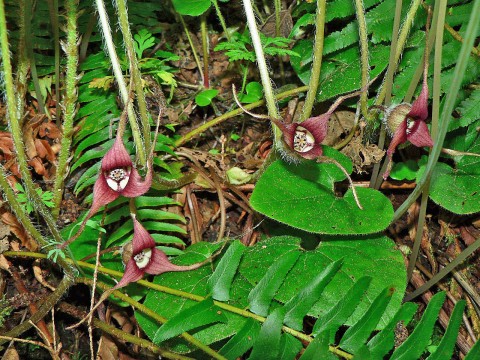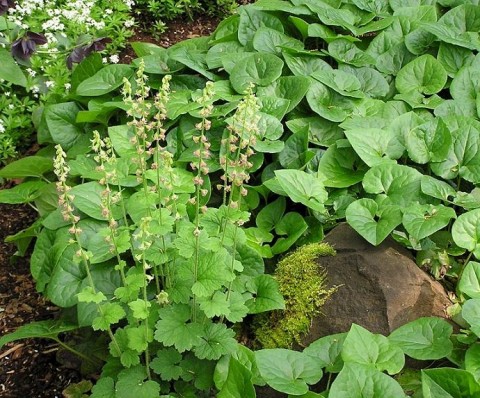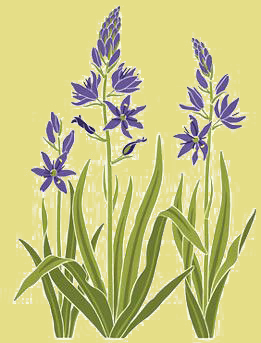Western Wild Ginger


1 - Image by Walter Siegmund
Licensed Under: CC-BY-SA-3.0 Unported
2 - Image by www.nwplants.com
Licensed Under: CC-BY-SA-3.0 Unported
Asarum caudatum, or Western wild ginger, is a pretty understory plant that thrives in moist locales on forest floors at low and middle elevations, especially beneath Douglas fir, whose fallen needles acidify the soil. It is found in British Columbia, Washington, Oregon, Northern California, Idaho and Western Montana.
Planted next to the woods near the south entrance to the Buck Lake Native Plant Garden, wild ginger is forming a 3-6 inch high mat of glossy, evergreen, heart-shaped leaves. It is the citrus-ginger fragrance of these leaves that are responsible for the plants common name. It can tolerate both deep shade and more open conditions, but may sustain some leaf burn if exposed to too much sun. In sunnier locations, wild ginger will need supplemental water to keep its leaves looking attractive. In more shade, it is very drought tolerant once established. The plant's unique flowers, which appear April through July, are purplish-brown and low growing, often hidden beneath the leaves. Asarum caudatum spreads via shallow rhizomes and also reproduces through the production of seeds. The seeds have a fleshy appendage that contains oils that are attractive to ants, which are important dispersers of the seeds. Unfortunately, slugs also find the plant's leaves attractive, so an application of Sluggo (a non-toxic iron-sulfate product), may be necessary to help protect the foliage..
Wild ginger is thought to have antibiotic properties and Native Americans used it to treat headaches, intestinal pain, joint pain and indigestion.
Visit the link below for more information on Western
wild ginger.

